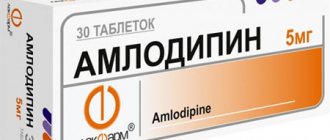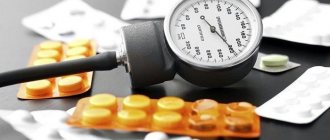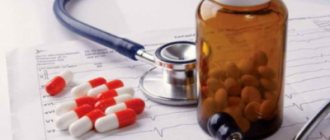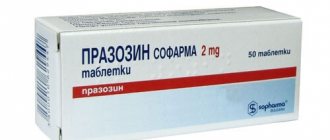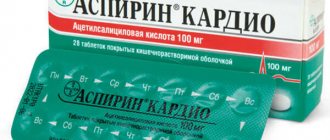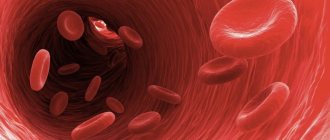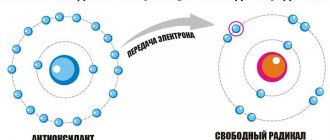Diuretics are a special class of diuretic drugs. They are used for arterial hypertension, edema, in the treatment of diseases of the urinary system, to normalize the acid-base balance.
Diuretics have the same pharmacological action, the drugs differ in effectiveness and duration of action.
These drugs are suitable for almost everyone, with the exception of people with acute renal failure. They are advised to use loop diuretics. Thiazide diuretics (TD) are prescribed for cardiac complications and contribute to the treatment of cardiovascular diseases.
Diuretics are a special class of diuretic drugs
Thiazide diuretics are used to treat arterial hypertension accompanied by edema and no effective analogues have been found since their invention. It is important that these antihypertensive drugs are affordable. However, medications of this class should be taken as prescribed by a doctor, who will take into account contraindications for a particular patient.
Thiazide diuretics list of drugs
List of drugs in Europe
The following drugs are common in Europe:
- Generic Lozol
- Thalitone generic: chlorthalidone
- Zaroxolyn generic: metolazone
- Aquatensen generic: methyclothiazide
- Aquazide H generic: hydrochlorothiazide
- Diuril generic: chlorothiazide
- Diuril Sodium generic: chlorothiazide
- Enduron generic: methyclothiazide
- Esidrix generic: hydrochlorothiazide
- Microzide generic: hydrochlorothiazide
- Mykrox generic: metolazone
- Naturetin generic: bendroflumethiazide
- Saluron generic: hydroflumethiazide
- Renese generic: polythiazide
According to some data, the following drugs are also actively used abroad:
- metolazone,
- hydroflumthiazide,
- chlorothiazide,
- benzthiazide,
- polythiazide,
- methyclothiazide,
- bendroflumethiazide,
- trichlormethiazide,
- quinetasone,
- thienylic acid, etc.
List of drugs in Russia and Belarus
List of drugs with the active ingredient indapamide (Indapamidum) :
- Acripamide
- Acripamide retard
- Akuter-Sanovel
- Arindap
- Arifon
- Arifon retard
- Vero-Indapamide
- Indapamide
- Indapamide Long Richter
- Indapamide MV Stada
- Indapamide retard
- Indapamide retard-OBL
- Indapamide retard-Teva
- Indapamide Sandoz
- Indapamide-OBL
- Indapamide-Verte
- Indapamide-Teva
- Indapres
- Indapsan
- Indap
- Indipam
- Indiur
- Inspra
- Ionic
- Ionic retard
- Ipres long
- Lorvas
- Lorvas SR
- Pamid
- RavelSR
- Retapres
- SR-Indamed
- Tenzar
List of drugs with the active substance hydrochlorothiazide (Hydrochlorothiazidum) :
- Hydrochlorothiazide
- Hydrochlorothiazide
- Hydrochlorothiazide-SAR
- Hypothiazide
Due to the fact that these drugs are widely used to treat hypertension, this list is far from complete, but contains the main trade names of these compounds.
Loop diuretics
Loop diuretics include three drugs: furosemide, ethacrynic acid and bumetanide. Loop diuretics have a powerful saluretic effect due to the blockade of the Ma2+/K+/Cl- cotransport system in the ascending limb of the loop of Henle. The main indication for their use in hypertension is concomitant renal failure , in which thiazide diuretics are ineffective. Prescribing loop diuretics to patients with uncomplicated hypertension makes no sense due to their short duration of action and toxicity. All the side effects characteristic of thiazide diuretics are also inherent to loop diuretics, which also have an ototoxic effect.
The most popular drug from the group of loop diuretics, furosemide , has a powerful but short-term (4-6 hours) effect, so it should be taken twice a day. For hypertension with chronic renal failure, the dose of furosemide is selected individually, according to the doubling rule (40, 80, 160, 320 mg).
Indications for the use of thiazide diuretics
Thiazide diuretics for arterial hypertension
Thiazide diuretics have been used continuously in the treatment of hypertension since their introduction to the market. This special class of diuretics is the cornerstone in the treatment of hypertension. Very few drugs used to treat any disease can boast such a long period of use, and this indicates both the effectiveness and safety of these chemical compounds. For example, hydrochlorothiazide is the most popular diuretic in the world for the treatment of hypertension. Thiazide diuretics reduce the risks of death, stroke, myocardial infarction, and heart failure in hypertension.
Many clinical guidelines for the treatment of hypertension address the use of thiazide diuretics. They are used as first-line drugs in the USA (JNC VII) and recommended for use in Europe (ESC/ESH). However, in 2011, the UK's National Institute of Health (NICE) recommended calcium channel blockers (CCBs) as first-line treatment in its guidelines for the treatment of essential hypertension. However, they also note that thiazide diuretics can be used as first-line agents when CCBs are contraindicated, if the patient has edema or is at high risk for heart failure. Thiazide diuretics have been replaced in Australia by angiotensin-converting enzyme inhibitors (ACEIs) due to their tendency to increase the risk of developing type 2 diabetes.
Thiazide diuretics for edema of various origins
Thiazide diuretics are actively used to treat the following types of edema:
- Edema of cardiac origin;
However, it should be borne in mind that in severe chronic heart failure (CHF), loop diuretics are much more effective.
- Edema of hepatic origin (with cirrhosis of the liver);
- Edema of renal origin;
However, they are ineffective in severe renal failure - when glomerular filtration decreases to less than 30-40 milliliters per minute. The exceptions are metolazone and indapamide due to their additional site of action in the proximal tubule.
- Edema with long-term administration of glucocorticoids.
Indications related to increased calcium reabsorption
Prevention of kidney stones
Thiazide diuretics reduce calcium excretion in the urine by increasing its reabsorption. Enhanced calcium reabsorption makes them useful in preventing the formation of calcium-containing kidney stones , as the concentration of calcium in the renal tubules is reduced.
Thiazide diuretics and osteoporosis
This effect is also associated with positive calcium balance and a reduced incidence of fractures in patients with osteoporosis. The mechanism for the development of this effect is as follows: thiazide diuretics stimulate the differentiation of osteoblasts and the formation of bone tissue. Thanks to this, they slow down the progression of osteoporosis .
Due to their ability to retain calcium in the body, thiazide diuretics are used in the treatment of:
- Dent's diseases;
- Hypocalcemia;
- Nephrolithiasis;
- Bromide poisoning;
Thiazide diuretics for nephrogenic diabetes insipidus
Thiazide diuretics are fundamental agents in the treatment of nephrogenic diabetes insipidus. Since a decrease in circulating blood volume (CBV) leads to increased water reabsorption in the proximal tubules of the nephron.
Properties of drugs
Diuretics affect the nephrons (structural components of the kidneys), responsible for filtering blood and producing urine. The effect of diuretics is to stimulate urine formation and influence the hormonal regulation of the process.
Diuretics are divided into:
- saluretics. These are thiazide derivatives (cyclomethiazide, hydrochlorothiazide), thiazide-like, loop diuretics and carbonic anhydrase inhibitors;
- potassium-sparing diuretics. Increase Na excretion and slightly affect K excretion;
- osmotic diuretics. They increase osmotic pressure and prevent the reabsorption (reabsorption) of water in the kidney tubules.
There are several types of diuretics.
Thiazide diuretics give a moderate diuretic effect, inhibit the process of reabsorption of sodium and chlorine in the renal tubules, promote their increased excretion from the body in the urine, and reduce calcium loss.
Negative features of TZ include leaching of potassium and magnesium from tissues, loss of potassium and magnesium in the urine, and disruption of carbohydrate and nitrogen metabolism.
When treating hypertension, cardiologists use thiazide-like diuretics in combination with basic antihypertensive drugs. They help relax the muscular layer of the arteriole bed, which reduces the load on the heart. Diuretics enhance the effect of antihypertensive drugs to reduce blood pressure and relieve thirst in diabetes insipidus. Sometimes TD is combined with loop diuretics.
The drug is taken orally in a strictly prescribed dose, the maximum effect occurs after 1-2 hours, the diuretic effect lasts 11-12 hours. Long-lasting action allows you to take tablets 1-2 times a day.
The drug is taken orally in a strictly prescribed dose
Easily and quickly absorbed, eliminate excess liquid. Taking TD does not entail restrictions on salt intake. After stopping constant use, the residues are completely eliminated from the body after 2.5-3 months.
Pharmacokinetics of thiazide diuretics
Thiazide diuretics, excluding chlorothiazide and chlorthalidone , are well absorbed from the gastrointestinal tract (GIT) and extensively metabolized in the liver. Due to poor absorption in the gastrointestinal tract, chlorothiazide can be administered parenterally .
The onset of action of chlorthalidone is slow due to slow absorption. These diuretics bind directly to plasma proteins and therefore enter the tubular lumen not through glomerular filtration, but through the anion transport mechanism .
Drug interactions of thiazide diuretics
Thiazide diuretics enhance the effect of loop diuretics, vitamin D, cardiac glycosides, diazoxide, lithium preparations, anesthetics. And thiazide diuretics weaken the effect of insulin, hypoglycemic sulfonylurea derivatives, anticoagulants, and uricosuric drugs in the treatment of gout.
Thiazide diuretics are the most dangerous in combination with quinidine due to the fact that against the background of hypokalemia (one of the side effects of using thiazide diuretics, which we will discuss below), quinidine can cause life-threatening ventricular arrhythmias.
The effect of thiazide diuretics is reduced when they are combined with nonsteroidal anti-inflammatory drugs (NSAIDs) and lipid-lowering cationic ion exchange resins.
When thiazide diuretics are combined with glucocorticoids and amphocetrine B, the risk of hypokalemia increases.
Classification
There are three known groups of diuretics, differing in chemical structure and localization of action in the nephron:
- thiazide;
- loop;
- potassium-sparing diuretics.
The pharmacological effect of thiazide and thiazide-like diuretics is realized at the level of the distal tubules , loop diuretics - at the level of the ascending part of the loop of Henle, potassium-sparing - in the most distant parts of the distal tubules.
All diuretics, except spironolactone, “work” on the surface facing the lumen of the nephron. Since diuretics circulate in the blood in a protein-bound form, they do not pass through the glomerular filter, but reach their sites of action through active secretion by the epithelium of the corresponding parts of the nephron. The inability of the renal epithelium to secrete one or another group of diuretics in certain pathological conditions (for example, acidosis) becomes of paramount importance and predetermines their choice.
Mechanism of action of thiazide diuretics
Members of this class of diuretics are benzothiadiazine derivatives. The term “thiazide” is also often used for drugs with similar effects that do not have a thiazide chemical structure. For example, chlorthalidone and metolazone. These agents are more correctly called thiazide-like diuretics.
Benzothiadiazine is the parent structure of the thiazide diuretic class of molecules
The mechanism of action of thiazide diuretics in lowering blood pressure is not fully understood. When thiazides are administered, blood pressure decreases by increasing diuresis, decreasing plasma volume, and decreasing cardiac output. An interesting fact is that with the constant use of thiazide diuretics, a decrease in pressure is also achieved by reducing peripheral resistance (i.e., they cause vasodilation). The mechanism for the development of this effect remains unknown. Thiazide diuretics also control blood pressure in part by inhibiting the reabsorption of Na, K, and Cl.
Unlike loop diuretics, thiazide diuretics increase calcium reabsorption in the distal tubules of the nephron. When the sodium concentration in tubular epithelial cells decreases, thiazides indirectly increase the activity of the Na-Ca antiporter.
An antiporter is a channel protein in cell membranes that transports substances across the membrane.
This facilitates the transfer of Ca from epithelial cells into the renal interstitial tissue. Ca movement itself reduces intracellular Ca concentration, allowing Ca to further diffuse from the tubular lumen into epithelial cells through apical Ca-selective channels (TRPV5). In other words, a decrease in Ca concentration in the cell increases the driving force for its reabsorption from the lumen of the nephron tubule.
Thiazide diuretics also increase Ca reabsorption through a mechanism that involves proximal tubular Na and Ca reabsorption in response to decreased Na concentrations. Part of this response occurs due to an increase in parathyroid hormone levels.
The diuretic effect of thiazide diuretics is much weaker than that of loop diuretics, develops more slowly, but is longer lasting.
Diuretics for high blood pressure
In case of hypertension, a person is prescribed many medications to normalize the condition. Diuretics for high blood pressure are included in the treatment of this disease, as they can lower blood pressure. Diuretic medications help remove excess fluid from the body, which is necessary for hypertension. These drugs act on various parts of the kidneys, where filtration occurs, as well as reabsorption. This effect significantly reduces the total volume of fluid that is located inside the arteries and vessels. As a result of this effect, blood pressure on the vascular walls decreases.
Among other things, diuretics for high blood pressure are necessary to block calcium channels, which leads to dilation of the arteries. These medications also help reduce blood output from the heart. By taking such medications, patients reduce the possibility of developing dangerous complications. Treatment of hypertension should be carried out under the supervision of a doctor so that the effect of all prescribed medications is sufficient.
Types of diuretics
Diuretics for hypertension have only a symptomatic effect; such drugs cannot completely cure this disease; they will only temporarily reduce blood pressure. If a person has problems with the kidneys, liver or heart, which are manifested by tissue swelling, then these remedies will help reduce this manifestation.
We must not forget that diuretic tablets can have side effects, so treatment with them is prescribed very carefully, starting with small doses.
Negative Impact:
- Sleep disorders.
- Decreased potassium levels in the body.
- Deterioration of potency in males.
- The drug may increase blood cholesterol.
- Delayed excretion of calcium from the body.
The list of medications that have diuretic properties is very extensive. Only a doctor can choose the right diuretic for a particular person. Hypertension medications that remove fluid from the body are divided into several types. Each group of these medications acts on a separate area of the kidney, thereby achieving a diuretic effect.
Varieties:
Loop diuretics are used for high blood pressure as an emergency aid, as they act quickly and remove all types of salt compounds from the body. The list of such remedies is headed by Furosemide, since it is an affordable drug that helps quickly.
Thiazide types of diuretics are designed to treat high blood pressure by blocking the backflow of chlorine and sodium. This reduces the total volume of fluid and plasma. Together with other blood pressure medications, these tablets have a good therapeutic effect. One of the representatives of this remedy is “Hypothiazide”.
Aldosterone antagonists help control hormones that increase blood pressure. This medicine blocks their number from increasing. The drug "Veroshpiron" is usually prescribed.
Potassium-sparing drugs are not potent, so they are often prescribed for blood pressure along with other diuretics. This product perfectly removes excess sodium from the body, and potassium is retained in full. "Amiloride" is such a remedy.
Table of drugs No. 1
Drug name
Active substance
Action speed
Advantages
| Furosemide | Furosemide | Within the first hour after administration. | The diuretic effect is pronounced. Blood pressure drops quickly. |
| Hypothiazide | Hydrochlorothiazide | The therapeutic effect is achieved within 2 hours after administration and lasts up to 3 days. | It is a good adjuvant treatment for hypertension. A weak diuretic effect allows you to preserve nutrients in the body. |
| Veroshpiron | Spironolactone | The diuretic effect occurs 2-5 days after starting to take the tablets. | The hypotensive property appears only in cases of high blood pressure. If these indicators are normal, then they will remain so. |
| Amiloride | Amiloride | The tablets begin to act 2 hours after administration. | Strengthens the diuretic effect of other diuretics. It has few side effects. |
It is impossible to select such a drug on your own, since you need to take into account the characteristics of the patient’s body and the manifestation of hypertension. It is also important to consider the possible side effects of these medications, and the cost of diuretics varies. Treatment with these medications can harm the body if they are chosen incorrectly.
Table of drugs No. 2
Drug name
Flaws
Manufacturer
Price
OUR READERS RECOMMEND!
Our readers successfully use ReCardio to treat hypertension. Seeing how popular this product is, we decided to bring it to your attention.
| Furosemide | It flushes out beneficial substances from the body due to its pronounced action. Can greatly reduce blood pressure. | Akrikhin HFC (Russia), Bryntsalov (Russia), Biomed (Russia), Astrapin (Germany and others). | 22-52 rubles |
| Hypothiazide | Contraindicated in people with diabetes in a form that is difficult to control. Can have a large number of side effects. | Pharmstandard (Russia), Biokhimik OJSC (Russia), Vertex (Russia) | 80-150 rubles |
| Veroshpiron | It has many contraindications and side effects. The effect is achieved after a long period of time. | Gedeon Richter (Hungary), Obolenskoye (Russia) | 80-100 rubles |
| Amiloride | The drug is ineffective as a stand-alone medicine. It is better to drink it in combination with other remedies. | Germany ratiopharm | 170-200 rubles |
Treatment with diuretics requires compliance with certain rules to improve the therapeutic effect of these medications and avoid the loss of beneficial substances by the body.
Treatment rules:
- Reduce salt and salty foods in your diet as much as possible.
- Alcoholic drinks, as well as sleeping pills, should not be taken simultaneously with diuretics. This will increase the side effects of the diuretic.
- Lost vitamins and beneficial elements removed by a diuretic drug must be restored by taking vitamin complexes.
- Before starting therapy with such drugs, you need to carefully study the instructions.
- If a doctor has prescribed a potassium-sparing diuretic for blood pressure, then consuming foods high in potassium is prohibited.
- While taking these medications, you should visit your doctor to monitor your kidney activity.
- Diuretics should be taken in the morning so that their main effect occurs during the day, and the person does not have to run to the toilet all night.
- Monitor blood pressure regularly during diuretic therapy.
Often, hypertensive patients have to take diuretics constantly, throughout their lives, since it is impossible to keep their blood pressure normal without them. If the doctor has prescribed such medications, you must regularly, once a month, visit a medical facility for a blood test. This will identify the loss of potassium, magnesium and other substances at an early stage.
Folk remedies
In addition to diuretic medications, there are home methods for such treatment. We must not forget that folk diuretics for hypertension cannot be taken without a doctor’s permission, although the effect of such drugs is mild, and the body’s adverse reactions during such therapy are minimal.
Berries
Berries can help in this situation. There are many known recipes that contain this ingredient.
Cranberry medicine:
- Mix beet and cranberry juice in equal proportions. Drink this remedy 1-2 times a day, ¼ cup. This tasty medicine will lower blood pressure, strengthen the walls of blood vessels and saturate the body with useful elements.
- Strawberries are very useful; they are indicated for hypertension, kidney and liver diseases. You can simply eat 100-200 grams of these berries every day to stabilize blood pressure, improve the functioning of the liver and kidneys, and also replenish folic acid and vitamin C.
- Rosehip has long been used to treat hypertension, as it has a diuretic effect that does not remove beneficial elements from the body. Rosehip decoctions are useful for people suffering from vitamin deficiencies, anemia, hypertension and other diseases. Rose hip decoction: boil 1 liter of water and pour in 3 tablespoons of dried rose hips. Infuse the product for about 12-13 hours, then drink 0.5 cups three times a day. The course of treatment is 1 month.
- Raisins do not have a diuretic effect, if we talk about its properties, but as part of some home remedies it copes with this task quite well. Mixture of vitamins: prepare a good ripe pumpkin, take 1 kg of pulp from it. Any variety of apples will do; you need 3 of them. You will need a handful of raisins. Using a meat grinder, grind all the components of this medicine and take 2-3 tablespoons before meals. The course of therapy can be long, several months.
Herbs
Plants have a huge number of beneficial actions. To choose the right one that helps remove excess fluid from the body, you need to study the entire list of diuretic herbs. Parsley is one of these.
Parsley recipes:
- Take the seeds of the plant, 1 tablespoon and mash them well, add 1 glass of water to the resulting pulp. Keep the solution for 10-11 hours, after which the product is ready for use. This dosage is enough for 1 day. You need to drink it in several doses.
- Prepare 2 tablespoons of finely chopped parsley roots, which are poured into 1 liter of boiling water. Leave the mixture for 1 hour. You need to drink the product 0.5 cups per day, at one time. The course of treatment is 10-12 days.
Nettle is used to prepare diuretics that help with high blood pressure. In addition, this plant is used to treat many other ailments; it is useful for the general strengthening of the body.
Nettle tincture:
Take the dried leaves of the plant, about 5 tablespoons, and pour a glass of alcohol or vodka. Keep the resulting mixture for 10 days in a dark and cool place. Drink 3-4 drops three times a day. The course of treatment can last 1 month.
Mint has long been used to treat diseases of the nervous system, to relieve swelling of the legs and arms, and also helps with hypertension. Patients with this disease need normalization of sleep and stabilization of the emotional background. Mint will help solve all these problems.
Mint decoction: add 1 tablespoon of dried herb to 1 glass of boiling water. Leave for 20-25 minutes. This dosage may be suitable for a single use, or perhaps drunk throughout the day. It is permissible to increase the amount of decoction you drink per day. Treatment can last 2-3 months.
Green tea has a good diuretic effect. It is enough to drink a mug of this drink in the morning to ensure a diuretic effect throughout the day. This product saturates the human body with essential substances and vitamins.
Black coffee can also help remove excess fluid from the body, but we must not forget that this drink is contraindicated for hypertensive patients, as it increases blood pressure.
Lemon is also considered a diuretic, but its effect is weak. Hypertensive patients love this fruit, especially those with stage 1 of this disease. When the disease is in the first stage of development, it is better to select diuretics from natural and natural ingredients. A weak diuretic effect will be sufficient at this stage of the pathology.
Everyone knows such diuretics as melon and watermelon. To remove water from the body as much as possible, you can do a fasting day by eating only these foods.
The diuretic effect reduces high blood pressure. It is important to choose the right means to help your body cope with the disease. Medicines for hypertension are necessary, but if there is an opportunity to do without them, then you need to take advantage of it.
Contraindications to the use of thiazide diuretics
Thiazide diuretics are absolutely contraindicated in the following diseases:
- Hypotension;
- Allergic reaction to the drug;
- Gout;
- Kidney failure;
- Lithium therapy;
- Hypokalemia;
- May worsen diabetes.
Thiazide diuretics reduce the clearance of uric acid because they compete with it for the same transporter, so they increase blood uric acid levels . Therefore, they should be prescribed with caution in patients with gout or hyperuricemia.
Chronic use of thiazide diuretics can lead to hyperglycemia . Thiazide diuretics can cause the body to lose potassium while maintaining calcium levels.
Thiazide diuretics may reduce placental perfusion and adversely affect the fetus and should be avoided during pregnancy .
Advantages and disadvantages of drugs
The use of drugs for the treatment of hypertension has been known for more than 70 years, during which time their mechanism of action and features of prescription have been quite well studied. The benefits of thiazide diuretics include:
- average activity
- rapid onset of results (30 - 60 minutes),
- long action profile (up to 11 hours),
- do not cause alkalization or acidification of the blood,
- prevent disturbances of cerebral blood flow in hypertension.
The main disadvantages of using diuretics of this group are:
- hypokalemia and hypomagnesemia, which provokes disturbances in the rhythm of contractions;
- retention of uric acid and exacerbation of gout;
- increased blood sugar and decompensation of diabetes mellitus;
- nausea, diarrhea, general weakness;
- pancreatitis;
- neurological disorders.
Side effects of thiazide diuretics
Thiazide diuretics cause the following side effects:
- Hyperglycemia;
- Hyperuricemia;
- Hypercalcemia;
- Hypokalemia (the mechanism of its development is described below);
- Hyponatremia;
- Hypomagnesemia;
- Hypocalciuria;
- Hyperuricemia, although gout is rare. Women have a lower risk than men;
- Gastrointestinal disorders: nausea, anorexia, diarrhea, cholecystitis, pancreatitis, abdominal pain, constipation;
- Hyperlipidemia. An increase in plasma cholesterol levels by 5-15% and an increase in the levels of very low density lipoproteins (VLDL) and triglycerides (TG). In general, the risk of developing atherosclerosis is relatively low;
- Central nervous system (CNS) disorders: weakness, xanthopsia, fatigue, paresthesia. Rarely encountered;
- Impotence develops in 10% of men due to a decrease in fluid volume in the body;
- Allergic reactions. Cross-allergy is observed with the sulfonamide group;
- Occasionally, photosensitivity and dermatitis are observed, and extremely rarely, thrombocytopenia, hemolytic anemia and acute necrotizing pancreatitis.
Mechanisms of hypokalemia
Thiazide diuretics are known to cause hypokalemia. There are several mechanisms for the development of hypokalemia when taking thiazide diuretics (i.e., a decrease in plasma potassium concentration):
Activation of the renin-angiotensin-aldosterone system due to diuretic hypovolemia: the body responds to decreased fluid levels in the body and begins to produce more aldosterone, which stimulates Na/K metabolism, leading to potassium loss. For this reason, ACE inhibitors, which inhibit angiotensin 2, are often used in combination with thiazide diuretics to combat hypokalemia. The correct combination of doses can successfully achieve this goal.
A decrease in the concentration of K in urine during an increase in diuresis increases the gradient of K from cells into the urine. Potassium is lost through potassium channels such as ROMK. This happens through passive diffusion.
Reception scheme
How to take diuretics for blood pressure correctly?
Diuretic medications are taken orally. Once or twice in the morning.
In this case, the reception is carried out before breakfast. You should not use diuretics after lunch, as their effect will be in the evening and at night. In this case, it will affect the patient's normal sleep.
Diuretic drugs increase urine output from the body! Thus, excess water and electrolyte compounds (potassium or sodium salts) are released. These processes help lower blood pressure.
Excessive potassium secretion can cause various complications in the body and lead to side effects. To prevent potassium deficiency, the doctor prescribes additional nutrition with foods rich in potassium elements. For example, persimmons, dried apricots or bananas. These prescriptions are necessary when taking loop or thiazide diuretics.
The doctor may also prescribe special potassium-sparing medications.
Drug treatment
Hypertension is subject to combination therapy, so diuretics are supplemented with other antihypertensive drugs. Some of them are ACEs or angiotensin-converting enzyme inhibitors, beta-blockers, calcium channel blockers - calcium antagonists.
Important! You need to take all medications according to the prescribed regimen. In combination, they can provide the desired effect.
It should be remembered that treatment of hypertension involves not only ensuring normal blood pressure levels. It is also important to pay attention to provoking factors and treat diseases that may be characterized by increased blood pressure. So, if you have diabetes, heart disease, nephropathy and other chronic diseases, you must take medications prescribed by your doctor and monitor the condition.
When selecting medications, the doctor will necessarily compare the potential risks and expected benefits. The disadvantage of some diuretics is the fact that they contribute to the leaching of calcium, potassium, and magnesium. To reduce the risk of complications associated with a lack of important substances, preliminary diagnosis is carried out. During therapy, it is important to visit a specialist in a timely manner to monitor the condition. If it causes concern, the doctor will replace the drug or select means to correct and replenish the necessary microelements.
Hypertension may require the use of medications that can cause significant harm to health. Therefore, you should not prescribe medications yourself; it is important to undergo a comprehensive diagnosis before your doctor develops an optimal and relatively safe treatment regimen.
What diuretics are currently used to treat patients with hypertension?
The main drugs of this class in the treatment of hypertension are thiazides and thiazide-like diuretics. The most commonly used drugs include hydrochlorothiazide, chlorthalidone and indapamide (Arifon-retard).
Thiazide diuretics can be used in a wide range of patients, both with uncomplicated and complicated hypertension. Clinical situations in which the use of diuretics is preferable:
- Heart failure
- IHD
- Diabetes
- Systolic hypertension
- Prevention of recurrent strokes
- Postmenopause
- Cerebrovascular diseases
- Elderly age
- Black race
The only contraindications to the use of thiazides are pregnancy and hypokalemia . Caution is required when used in patients with gout, dyslipidemia, diabetes mellitus and severe renal failure.
Features of relief of hypertensive crisis
Prompt reduction of blood pressure during a hypertensive crisis is an important component of the prevention of severe complications. The basis of therapy is antihypertensive drugs such as Corinfar or another calcium ion antagonist. Improvement occurs gradually, within 30 minutes. If there is no response to therapy, the doctor may prescribe a repeat dose of the optimal dose. The duration of the medicine is 5 hours. This time may be enough to stabilize the condition.
The correction plan includes several steps:
● use of a diuretic (Indapamide or others) or a beta blocker (Atenolol, Metoprolol); ● a combination of both types of drugs; ● addition of the treatment regimen with ACE inhibitors (Renitek, Amlodipine, etc.).
The selection of a treatment regimen is always individual and is based on the stage of the disease, the general condition of the person, characteristics and reactions to medications.
